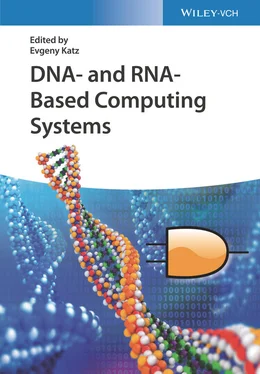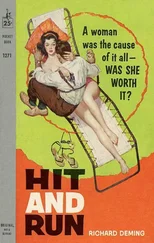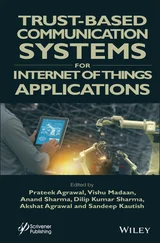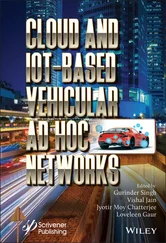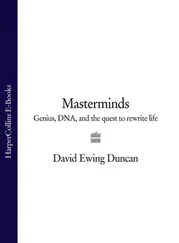25 Index
26 End User License Agreement
1 Chapter 2 Table 2.1 The sequence of extraction operations for a given illustrative SAT ...
2 Chapter 5 Table 5.1 List of some common RNA aptamers with corresponding fluorogenic lig...
3 Chapter 10Table 10.1 Principal characteristics of the three experimental systems capabl...
4 Chapter 12Table 12.1 Truth table of various basic logic gates.Table 12.2 General classification of different advanced DNA logic circuits.
5 Chapter 14Table 14.1 Paths and values encoded by the different test tubes used for solv...
6 Chapter 17Table 17.1 Comparison of conventional fluorescence and nanopore decoding meth...
1 Chapter 1 Figure 1.1 Moore's law – exponential increase of transistors on integrated c... Figure 1.2 Biomolecular computing systems mimicking operation of different B... Figure 1.3 The discoverers of the structure of DNA. James Watson (b.1928) at... Figure 1.4 The structure of the DNA double helix. The atoms in the structure... Figure 1.5 Leonard Adleman – a pioneer of the biomolecular computing; the ph... Figure 1.6 The principle of Leonard Adleman's DNA computer to solve the “tra... Figure 1.7 The DNA computer playing the tic‐tac‐toe game. Shown in the foreg... Figure 1.8 Atomic force microscopy (AFM) images of DNA origami with differen... Figure 1.9 An example of a DNA chip used in the DNA sensing and computing. T... Figure 1.10 Logic program (a) and automatically generated chemical reaction ... Figure 1.11 PCR method for copying DNA molecules: a thermal cycler, componen... Figure 1.12 Apparatus operating as the end‐to‐end automatic DNA data storage...
2 Chapter 2 Figure 2.1 Adleman's DNA computing procedure [2]. For (a) given super graph,... Figure 2.2 Lipton's graph [3] for constructing a binary number for a general... Figure 2.3 Representation of surface‐based DNA computing method [4]. Figure 2.4 Representation of surface‐bound DNA sequence. Figure 2.5 Illustration of four literal strings for the DNA hairpin formatio... Figure 2.6 (a) The five‐node graph and (b) its complementary graph used to s... Figure 2.7 Chao's single‐molecule DNA navigator [13] for solving the maze. Figure 2.8 DNA origami is a group of linked dsDNA. The structure consists of...
3 Chapter 3 Figure 3.1 The simulation of a register machine. (a) Simulation of bounded r... Figure 3.2 State graph with state transition implemented by CRNs. Figure 3.3 Implementation of Rule 110 Automata. Two different arrangements ... Figure 3.4 Diagrams of the DNA implementation models. (a) Mapping model of b... Figure 3.5 The system performing encoding, computing, and decoding signals i... Figure 3.6 (a) Sequence of reactions for the three‐phase clock based on the ... Figure 3.7 A folded eight‐point four‐parallel real‐valued FFT processor. Figure 3.8 Molecular reactions for each element of the FFT processor in Figu...
4 Chapter 4 Figure 4.1 Examples of deoxyribozyme‐based logic gates. (a) One of the first... Figure 4.2 AND deoxyribozyme ligase gate connected to YES RCDZ gates. (a) DN... Figure 4.3 Design of strand displacement (seesaw) DNA logic gates [53]. (a) ... Figure 4.4 DNA strand displacement logic gates attached to a DNA origami til... Figure 4.5 Design of molecular beacon (MB)‐based DNA logic gates. (a) MB pro... Figure 4.6 4WJ DNA logic gates and tile‐integrated DNA circuits. (a) 4WJ NOT...
5 Chapter 5 Figure 5.1 Nucleic acid nanostructure designing techniques. (a) DNA origami ... Figure 5.2 (a) Examples of the diverse application of nucleic acid aptamers.... Figure 5.3 Common binary logic gate symbols and truth tables. Figure 5.4 Logic gates design principle using MG‐binding RNA aptamer. (a) Re... Figure 5.5 Examples of combinatorial logic gates using half‐adder and full‐a...
6 Chapter 6 Figure 6.1 Representative tile‐based DNA nanostructures. (a) 2D DNA crystall... Figure 6.2 Representative DNA origami nanostructures. (a) DNA origami folded... Figure 6.3 DNA/RNA nanotechnology‐enabled toolbox for synthetic circuits. A ...Figure 6.4 Typical AND gate circuits. (a) A DNAzyme‐enabled AND gate.. (...Figure 6.5 Scheme of an integrated live‐cell circuit enabled by DNA/RNA nano...
7 Chapter 7Figure 7.1 Engineering steps of DNA switches. (I) DNA can adopt a wide range...Figure 7.2 (a) Cartoon representation of the population‐shift mechanism. The...Figure 7.3 Based on the population‐shift model, different strategies exist t...Figure 7.4 Creating switches based on the population‐shift model for double ...Figure 7.5 Exploiting allosteric effectors to create logic gates. (a) Using ...Figure 7.6 Examples of logic gate created using the strategies discussed in ...Figure 7.7 (a) Two or more switches with different affinities for the input ...
8 Chapter 8Figure 8.1 The universal input/output mechanism of DNA‐based logic circuit. ...Figure 8.2 Schematic representation of the YES gate based on the hairpin str...Figure 8.3 Schematic representation of the DNA computing assembly based on t...Figure 8.4 Schematic representation of cascaded DNA computation based on the...Figure 8.5 Schematic representation of the AND gate based on the strand disp...Figure 8.6 Schematic representation of the parity generator/checker based on...Figure 8.7 Schematic representation of the AND logic gate that consists of t...Figure 8.8 Schematic representation of the three‐input majority logic gate....Figure 8.9 Schematic representation of the 2‐to‐4 DC.Figure 8.10 The electronic diagram (i) and the schematic representation (ii)...Figure 8.11 (a) Schematic representation of the label‐free 8‐to‐3 encoder. (...Figure 8.12 (i) Schematic representation of DNA structural conversions induc...Figure 8.13 Schematic representation of the logic operations based on HP26‐t...Figure 8.14 (i) Schematic representation of the DNA‐MTC supramolecular logic...Figure 8.15 Schematic representation of the reconfigurable DNA‐supramolecula...
9 Chapter 9Figure 9.1 Truth tables and symbols for the elementary two‐input Boolean log...Figure 9.2 Three‐color QD logic gates. (I) Mechanism for control of hybridiz...Figure 9.3 Time‐gated photonic logic gates with LLCs as FRET donors. (I) ET‐...Figure 9.4 DNA‐mediated AuNP aggregation as a colorimetric indicator. (I) Vi...Figure 9.5 Three‐input logic gate with an AuNP quencher. (I) Cooperative bin...Figure 9.6 PAA‐templated fluorescent AgNC logic gates. (I) Transfer of AgNC ...Figure 9.7 Fluorescence quenching by graphene oxide for two‐output logic cir...Figure 9.8 Logic gate with CDs (labeled as “C‐dots”) and EB. (I) Adsorption ...Figure 9.9 Three‐input logic circuit with a conjugated polymer FRET donor. (...
10 Chapter 10Figure 10.1 Principle of DNA strand displacement (DSD) reactions (a,b) and o...Figure 10.2 Mechanism of the genelet reaction system (a) and network oscilla...Figure 10.3 Mechanism of the PEN DNA toolbox reaction system (a) and network...Figure 10.4 Reaction–diffusion edge detection pattern engineered with DNA st...Figure 10.5 PEN autocatalyzers generate programmable concentration fronts th...Figure 10.6 “Go‐fetch” fronts (a) and waves and spirals with PEN reactions (...Figure 10.7 Strategies to control the diffusion and geometry of RD patterns....Figure 10.8 Steady‐state “colony” formation in a population of synergic part...Figure 10.9 Illustration of Wolpert's concept of positional information as a...Figure 10.10 Static pattern of positional information engineered with DNA st...Figure 10.11 Static patterns of positional information can be engineered wit...
11 Chapter 12Figure 12.1 (a) The operation of half‐adder/half‐subtractor based on the uni...Figure 12.2 (A) The operation of encoder/decoder based on the universal GO/D...Figure 12.3 (a) The parity checker for identifying even/odd numbers from nat...Figure 12.4 (a) The five‐digit DNA keypad lock based on silver microspheres ...Figure 12.5 Concatenated DNA logic circuits with (a) visual.(b) fluoresc...Figure 12.6 (a) Schematic illustration of the DNA “contrary logic pairs” lib...Figure 12.7 The integration of DNA computing with (A) peptides. (a) Equivale...
Читать дальше
